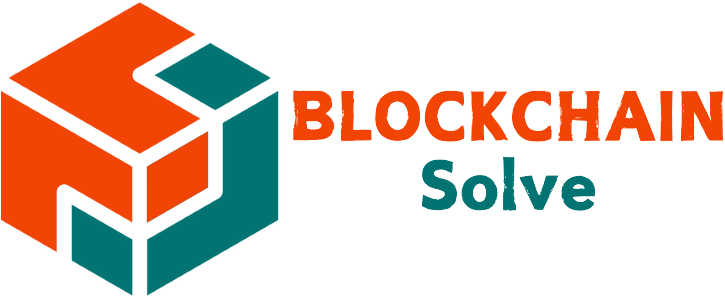The global financial system, while functional, is built on aging infrastructure that is often slow, expensive, and opaque. It is an ecosystem ripe for a technological overhaul. The introduction of blockchain in financial services promises a fundamental transformation, offering a new model for trust, transparency, and efficiency in how we move and manage value across the globe. This guide explores how this technology is actively reshaping the industry.
Why traditional finance is ripe for disruption

The global financial system operates on an infrastructure designed for a pre-digital world. This legacy model, while functional, is burdened by inherent inefficiencies. It relies on a web of intermediaries, which slows down transaction processing and inflates costs for businesses and consumers. This outdated structure lacks transparency, making it difficult to track funds and creating vulnerabilities for fraud. The demand for a more streamlined and secure alternative is accelerating interest in distributed ledger technology.
These foundational weaknesses present a clear case for technological overhaul. The core issues stem from centralization and complexity, which blockchain aims to solve directly. By addressing these pain points, the use of blockchain in financial services promises a more robust, efficient, and equitable system for everyone. The primary challenges of the existing framework include:
- Slow settlement times: International payments and stock trades can take two to three business days to clear and settle through complex networks.
- High transaction costs: Every intermediary in a transaction chain, from clearinghouses to correspondent banks, takes a fee, increasing costs for all parties.
- Significant operational risks: Complex, multi-party processes are prone to human error, data mismatches, and reconciliation failures, creating financial risk.
- Lack of transparency: Centralized ledgers mean participants have limited visibility into the transaction lifecycle, hindering real-time tracking and auditing.
Core applications of blockchain in the financial sector
Blockchain technology offers a new model for financial transactions. By replacing centralized ledgers with a distributed system, it addresses core weaknesses in traditional finance. The most impactful applications of blockchain in financial services are already being implemented, showing clear value beyond theory.
Cross-border payments and remittances
Blockchain removes intermediary banks, enabling faster and cheaper peer-to-peer transfers across borders. This directly benefits international trade and personal remittances by cutting settlement times from days to minutes. The result is a more efficient global payment system.
Trade finance digitization
In trade finance, a shared ledger digitizes extensive paperwork. All parties view the same data in real-time, which reduces fraud and accelerates the entire process. This creates a single source of truth for complex international transactions, increasing trust and efficiency.
Securities clearing and settlement
This technology facilitates near-instant settlement, replacing the multi-day standard for trading stocks. The process uses asset tokenization, where assets like tokenized real estate become digital tokens. This reduces counterparty risk and frees up significant capital.
The key benefits of adopting blockchain technology

Adopting blockchain technology introduces transformative advantages that address the core inefficiencies of the current financial system. Its unique architecture fosters trust and security without relying on a central authority. The impact goes beyond simple cost savings, creating a more robust and responsive financial ecosystem for all participants involved in financial services.
- Enhanced security from its cryptographic nature makes the ledger exceptionally resistant to fraud. Every transaction is linked to the previous one, creating an immutable chain that is nearly impossible to tamper with undetected.
- Increased transparency as all authorized participants view the same ledger. This shared source of truth reduces disputes and eliminates the need for manual reconciliation between separate company records.
- Greater efficiency and speed by undefined and removing intermediaries. Settlements that once took days can be completed in minutes.
- Reduced costs from eliminating intermediaries and automating manual processes. This directly translates to lower transaction fees for corporations and individuals alike.
Challenges and the future outlook for blockchain in finance

Despite its immense potential, the widespread adoption of blockchain in financial services faces several significant hurdles. These are not just technological but also regulatory and operational in nature. Overcoming them is the key to unlocking the technology’s full capabilities and realizing its transformative vision.
Key hurdles to overcome
Primary challenges include persistent regulatory uncertainty, as governments worldwide slowly develop frameworks for digital assets. Scalability is another critical concern; many current blockchain networks struggle to handle the high transaction volume required by global finance. Finally, integrating new blockchain systems with entrenched legacy financial infrastructure remains a complex and costly endeavor for established institutions.
The future outlook
The journey towards a blockchain-powered financial system is a marathon, not a sprint. The future will likely involve hybrid models where blockchain solutions coexist and integrate with traditional systems. As technology matures and regulations become clearer, we can expect to see blockchain move from niche applications to becoming a foundational pillar of a faster, more secure, and more inclusive global financial economy.
The evolution of finance is undeniable. The integration of blockchain technology represents a pivotal shift away from slow, opaque, and costly legacy systems. It offers a clear path toward a more secure, efficient, and transparent future. To stay ahead, understanding this technology is no longer optional; it is essential. Explore more insights and expert analysis at Blockchain Solve.

